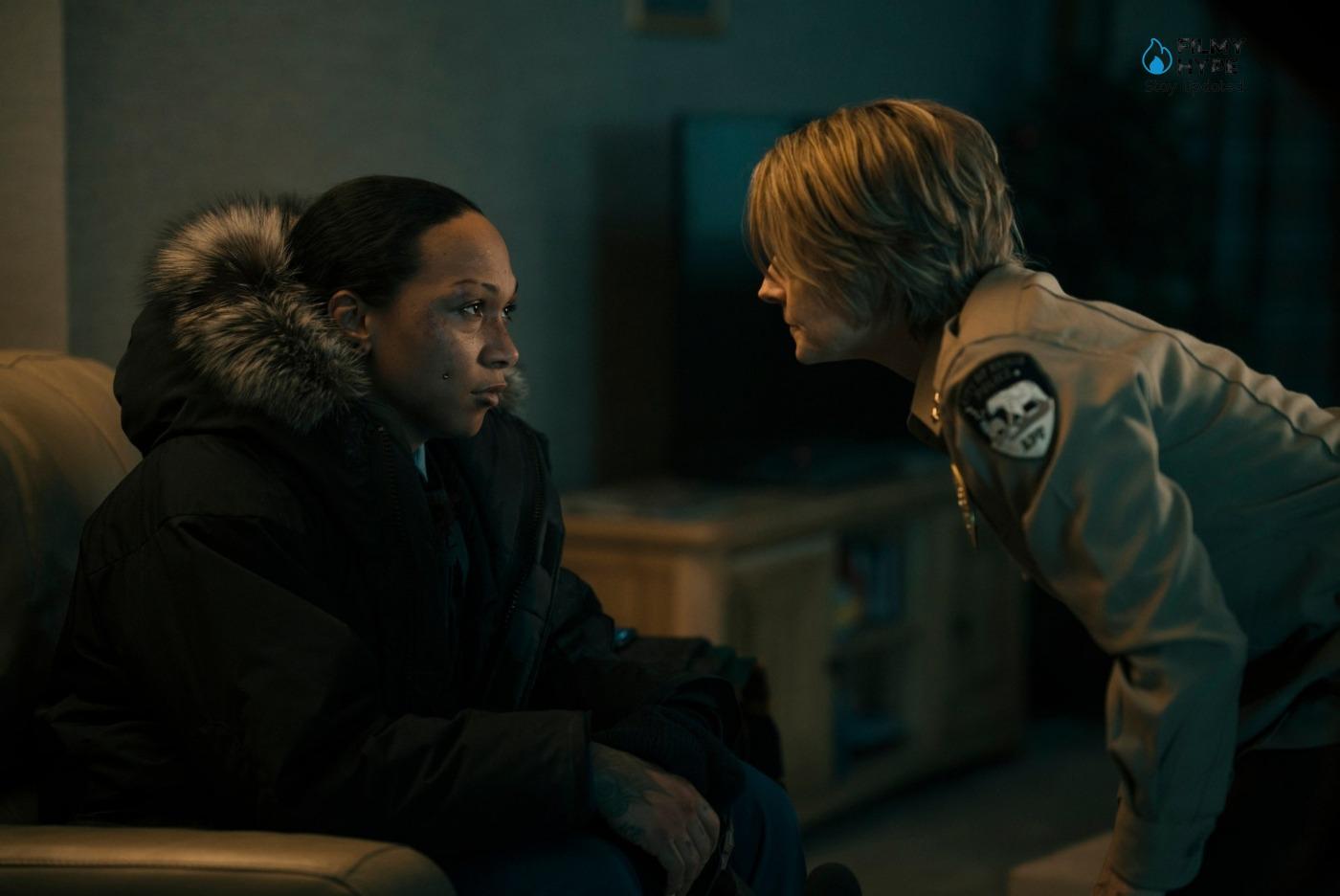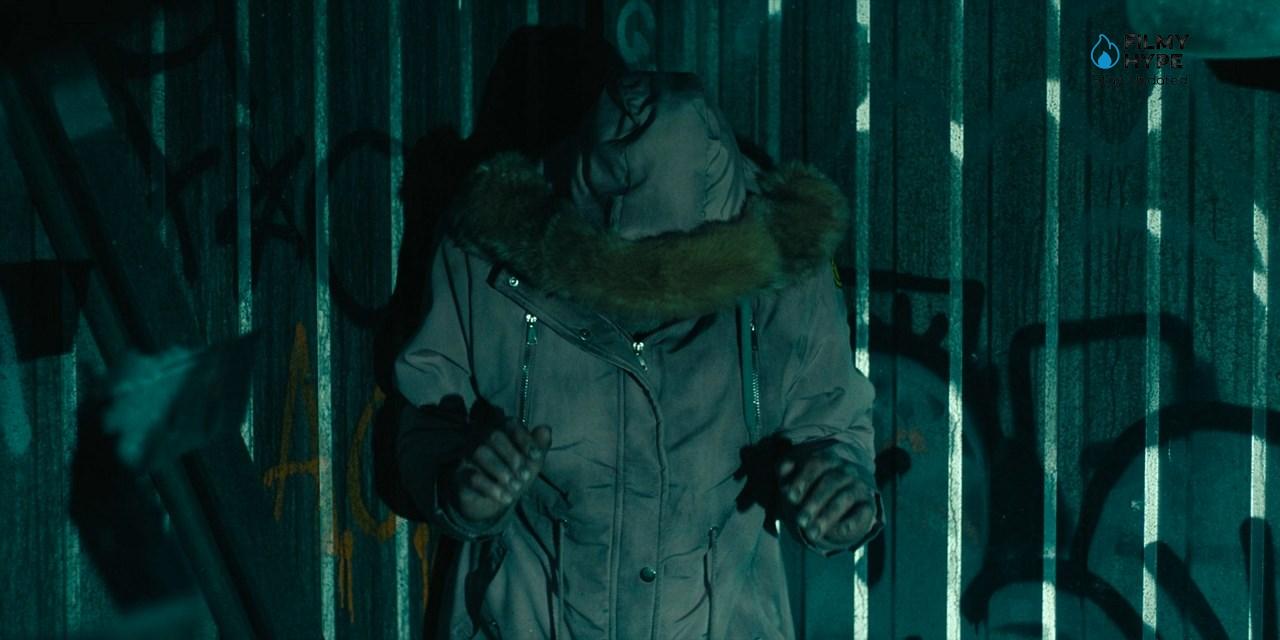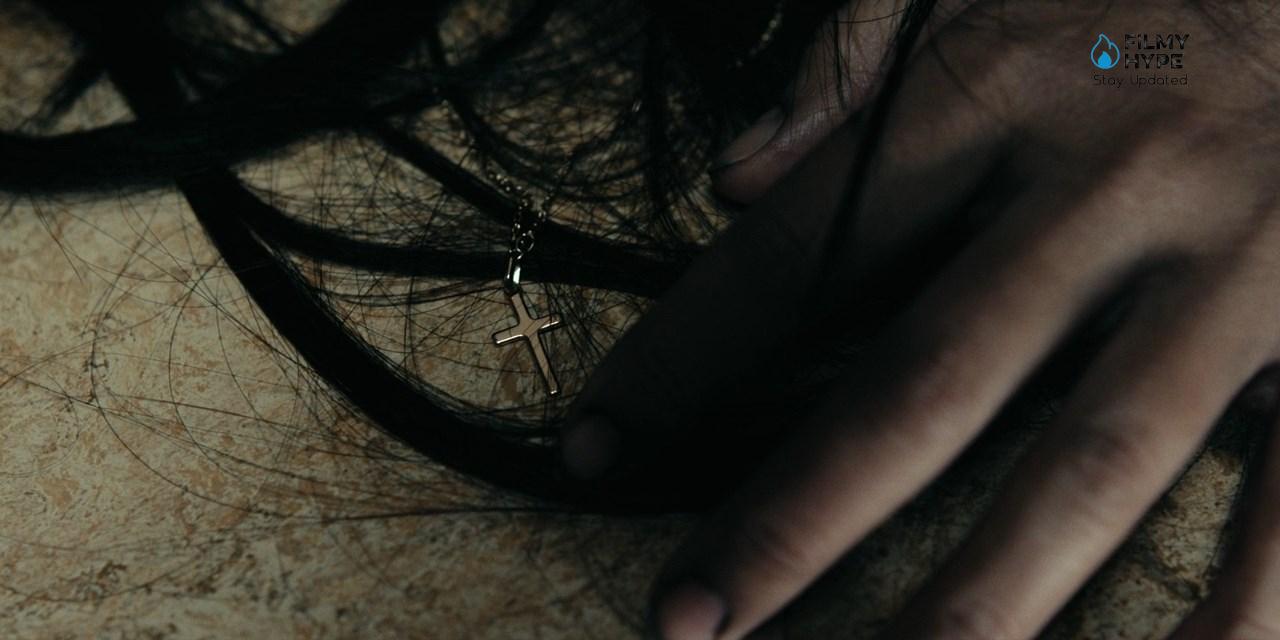True Detective – Night Country Episode 4 Analysis and Ending Explained
In True Detective – Night Country Episode 4 they used the definition “dark lands”. But regardless of the privileged translation, we know where we are entering we have arrived at Night Country. In those dark lands that swallowed Annie K, Julia (Aka Niviâna), and many – too many – others. The tragic death of a character in episode 4 of True Detective Night Country raises numerous questions about his suicide and its impact on the other protagonists. Consistent with previous chapters, this episode delves into the actions of Danvers and Navarro in their quest to unravel the murder mystery central to the plot.

True Detective – Night Country Episode 4 Analysis
However, like the three preceding episodes, it also highlights Danvers’ struggles to maintain her relationship with her daughter, Peter’s challenges in finding time for his family, the painful revelation Hank faces, and Navarro’s efforts to protect his sister. As the investigations into Annie K and Tsalal progress, the four characters experience tragedies in their private lives. As Danvers’ daughter, Leah, leaves home on Christmas Eve, Peter’s wife asks her to leave home. Simultaneously, Hank experiences disdain for the woman he believes would be his wife. Navarro’s plot also takes a dark turn when he discovers that his sister decided to take her own life.
Color First of All
This time in the analysis of the episode I want to start from the color. From the first images, immediately after the insomnia that keeps Liz Danvers (Jodie Foster) awake, pushing her to watch and re-watch the video of Annie K’s death while holding a hand on her throat, as if to protect herself, color dominates. Aqua green. The color of hospitals. Including the Lighthouse, where Julia is hospitalized. The green walls of the police station where Danvers, maternal and protective, picked Julia up on the street. The green of Julia’s underwear, who had undressed and was wandering around in the snow crying. The green of her car next to her when Danvers sees her and stops to help her. Both – the underwear and the car – seem to be gray the photography deliberately transforms into teal.
Light green, in particular aqua green, is the color known to represent, in symbolism, tenacity and perseverance. But also for having always been the color responsible for transmitting calm and serenity to those who observe it. This is why it has been used for a long time in hospitals and clinics: we try to instill serenity in those who frequent that environment, which is notoriously not a place of happiness. Teal, also known as aquamarine – and the link with Julia’s character in this episode is all too evident – is also used in this context to try to instill tranquility, serenity, and calmness. Julia surrounds herself with it, in vain. Because the history of colors tells us that anyone who looks for them in clothes and accessories (such as underwear) is an insecure person. Anyone who cannot live with this color is a frustrated person, in the throes of suffering. Julia is the protagonist of the fourth episode because the two usual protagonists relate to her, showing their natural inclination towards her: caring.
Care and Search for Truth
Denvers, we said in the analysis of the third episode last week, have a great maternal instinct and a great love for children. But he’s always had trouble dealing with people, as Captain Connelly (Christopher Eccleston) reminds us. When he stops to help Julia, he treats her in a motherly manner. Like a scared little girl in need of help. But Danvers demonstrates that kind of caring inclination in different ways depending on the circumstances. She checks that Leah (Isabella LaBlanc) is sleeping peacefully, worried about her (although she has ordered the owner of the mine not to press charges against Leah, who was caught defiling the entrance to the offices).
She looks after her when she is not seen. And she does it with people, especially children and women. He doesn’t look after the only plant he has in his office, which is already dead even though Connelly is busy watering it: he takes care of things and people openly, Liz doesn’t care about things and does it privately with people. Above all, for her, caring means solving cases. Taking care of it means finding Annie K’s killer. It means finding out what happened to the scientists, to Otis Heiss (Klaus Tange), and finally also to Navarro.

Always denying the supernatural dimension of what happens, denying the existence of an afterlife and therefore of any dimension, even a spiritual one, Danvers claims to be here now, to do his duty. Seeking the truth and giving justice to the victims – better late than never – means taking care of them. Caring for the whole world.
The encounter with the one-eyed polar bear, just like his son Holden’s stuffed animal – at this point we know – takes place in a similar way to that of Navarro, but the attitude of the two women is diametrically opposite. Liz Danvers sees a polar animal on the ice, and Navarro sees a symbol. And she remembered the vision of her with Holden. Truth-seeking and nurturing are what Danvers and Navarro have in common, but they handle both things differently… And complementary.
The Orange
Before going out and heading towards her death, Julia sees an orange coming between her feet, from under the bed. When she bends down she sees a screaming corpse, the corpse of her mother (we recognize her by the cross around her neck). The orange had also reached Navarro, who had thrown it into the darkness and ice. So it’s time to ask what that means. In symbolism, orange is synonymous with fertility. It happens with all fruits with many seeds: they represent fertility and fecundity, and it is traditional to give them to young women and brides.
But orange is also a symbol of purity. Orange blossoms, which are associated with weddings and brides, are white flowers. As is known, white symbolizes purity and in Christian iconography, it is the color attributed to the Madonna, the Virgin. The reason why it is Julia and her sister who “receive” orange in a supernatural way is therefore linked to the purity of their souls and the clarity of their minds, which see what others, like Danvers, are prevented from doing. Danvers believes in the earthly world, in what can be seen. Julia and Evangeline Navarro believe what their soul, their dreams and their dreams show them.
Understand the Facts
One of the main themes of this episode concerns understanding events. Recalling the Wheeler case, Liz tells Navarro that she knows the woman saw something. She knows it. And when Navarro denies it, he calls her a liar. Not believing in the supernatural does not mean understanding the facts, and Navarro saw something, we know it. Likewise, Pete Prior (Finn Bennett) immediately realizes what happened with the mysterious Alina, while his father Hank (John Hawkes) doesn’t even think about it. Yet he is a policeman. Pete immediately asks him, when he returns from the airport without a girlfriend, if he sent her any money. Hank cleverly changes the subject, because he too now understands the facts.

Pete is in crisis with his wife because he knows she doesn’t want a child. Leah is in crisis with her stepmother because she doesn’t feel understood or supported. Navarro is in crisis over the news of Julia’s death and goes to be massacred by three men. Kaviq (Joel Montgrand) pretends to get down on one knee to propose to Navarro only to distract her and fix her hand. But all these people know very well how things are. They understand the situation, but they don’t accept it. Or they look for ways to escape it. Or to let off steam. Rose (Fiona Shaw) has fled her very serious rational, and noisy life, to take refuge in silence. Her where she began to feel the dead. Everything in this episode brings us back to the axiom of True Detective – Night Country. That is: not believing does not mean understanding. Understanding does not mean accepting.
Unexplained Injuries
The wounds of the soul emerge little by little. Danvers opens up about his past, recalling his mother’s death when he was 7 years old. This is why he doesn’t believe: they told her to pray so that her mother would be saved and, as much as she prayed day and night, Danvers lost her mother. She was heartbroken at 7 years old and has been angry ever since. Physical wounds must be interpreted. Danvers and Navarro return to the geologist – on Christmas Eve – to get answers because Annie’s wounds and her screams ring in their ears.
They know they will have to have maps of the frozen caves where Annie K was killed, but they still have a lot to explain. The spiral (which we talked about in the analysis of the first episode) was designed by Tagaq, who passed away. And many inexplicable wounds. Perforated eardrums, burned corneas, self-inflicted bites. Otis Heiss’ wounds, reported after a mysterious accident 8 years earlier, are the only injuries linked to the dead scientists – killed, now under investigation for murder – found in the snow. With folded clothes, just like Julia’s.
When they arrive at the dredge, Danvers follows what he thinks is Clark – he is wearing Annie’s parka – up, while Navarro hears himself calling from below. A whisper. And when Danvers, having identified Otis Heiss (“He’s hiding in the dark lands. We’re all in the dark lands now”) goes down and finds Navarro, the policewoman sitting on the floor. And she’s bleeding from her ears.
True Detective – Night Country Episode 4 Ending Explained
Episode 4 of True Detective – Night Country concludes with a cliffhanger that leaves viewers full of questions about Navarro and Raymond Clark. This episode picks up the plot a few days after the events of episode 3, where Danvers dives into Annie K’s video obsession and tries to decipher the location of her final moments. Seeking more details about the ice cave Annie was in, Danvers and Navarro decide to visit the local geology professor. In the final moments of this episode, their search for answers leads them to the abandoned dredges of Ennis. The visit to the place is made in the hope of finding Raymond Clark. However, the plot takes an unexpected turn when Navarro experiences something supernatural, while Danvers has a surprising encounter.
What Navarro sees at the end of True Detective – Night Country Episode 4
While Danvers tries to catch the man hiding in the dredges, Navarro is distracted by seeing a dead woman floating in the water channel below them. He goes downstairs and notices footprints leading away from the canal. Moments later, he sees a Christmas tree inside the dredge, and as soon as he turns around, he comes face to face with a screaming ghost. Although the ghost initially appears unrecognizable, her blue hair and the tattoo below her collarbone reveal that she is Navarro’s sister, Jules, who had taken her life hours before Navarro and Danvers arrived at the dredges.
Although it is unclear why Jules’ ghost appears in front of Navarro, it seems likely that he wanted to warn him of impending danger or assure him that his ability to see the dead is not a curse. Like the ghosts in M. Night Shyamalan‘s The Sixth Sense, Jules could have been there to help Navarro or be trying to seek his help with something. Whatever Jules wanted to convey to Navarro, his appearance suggests that something supernatural is brewing beneath the series’ crime drama.
Why Does Seeing Jules’ Ghost Cause Navarro’s Ears to Bleed?
The logical explanation behind the bleeding in Navarro’s ears could be attributed to the scream of Jules’ ghost, which was so powerful that it caused damage to his ears and caused the bleeding. Abrupt exposure to loud noises, especially nearby, can trigger acoustic trauma, resulting in bleeding in the ears. This detail shows that Jules’ scream was not simply a figment of Navarro’s imagination. What he witnessed was the spirit of her sister, trying to convey a message to him. Additionally, the possibility that Ennis‘s contaminated water contributed to the phenomenon adds an intriguing nuance to this supernatural experience. Although the bleeding in her ears confirms her ability to perceive the supernatural, subsequent events reinforce this perception forcefully.
What Does “Hiding in the Night Country” Mean?
The revelation that Raymond Clark is “hiding in the Night Country” adds even more confusion to this character’s location and motives. Before Danvers finds Navarro with bleeding ears, she crosses paths with Otis Heiss, whom she initially mistakes for Raymond Clark. However, upon raising his head, Danvers identifies him through the photos in his file and calls him by his name. Despite Otis asking her to leave him alone, Danvers inquires about Raymond Clark when she notices his jacket. Heiss reveals that Raymond Clark is hiding in the Night Country and cryptically adds that everyone is in the Night Country. Heiss’ line, “Now you’re in Night Country,” evokes Reggie Ledoux’s quote, “Now you’re in Carcosa,” from Season 1.

The similarities between both expressions suggest that Night Country is a parallel supernatural world, similar to Carcosa. Rose mentioned in a previous episode that Ennis is the place where the lines separating the living from the dead begin to blur. Possibly, Night Country, like Carcosa, represents what lies beyond those boundaries that divide the material plane from the metaphysical. Like Rust Cohle, Navarro likely can glimpse beyond humanity’s plane of existence, and based on Heiss’s hints, Raymond Clark might have found a way to communicate with the other side in his quest to find Annie.
Why Does Jules Commit Suicide in True Detective Night Country Episode 4?
From the beginning of the fourth season of True Detective, Jules seemed afflicted by strange visions of dead people. Faced with this situation, Navarro proposed moving to Alaska with her, convinced that being in the company of her family could be beneficial. Since Jules and Navarro’s mother also experienced similar visions in the past, the sisters concluded that this was an inherited mental health condition. Despite Navarro’s efforts to help her and encourage her to seek professional assistance, Jules was initially reluctant due to previous experiences with medications and mental health institutions.
As the season went on, Jules’ condition worsened, with her visions intensifying. In the opening moments of episode 4 of True Detective – Night Country, Danvers sees Jules shedding her clothes in the bitter cold, intervening in time to prevent a tragedy. Navarro subsequently decides to commit Jules to the Ennis psychiatric facility, but a last vision of her mother has a profound impact on her mental health. Seeing her deceased mother under her bed, Jules, apparently fed up with her familial “curse”, decides to take her life. Throughout her life, Jules lived in fear of her visions, perceiving them as a burden inherited from her mother. Towards the denouement of his story, he no longer wished to experience fear anymore and therefore chose to end his life.
What Does the Orange Symbolize Before Jules’ Death?
Oranges have frequently been used as symbols of impending misfortune or unfortunate events in movies and television shows. An emblematic example is in The Godfather, where Vito Corleone is shot shortly after going out to buy oranges. Similarly, in Requiem for a Dream, the camera focuses on a man peeling an orange while Harry and Tyrone search for drugs in the back of a supermarket. In episode 3 of True Detective – Night Country, Navarro discovers an orange in the snow and, throwing it, watches as it rolls back toward her. As in these and other productions, True Detective seems to use oranges as a harbinger of impending tragedies in the history of its characters. The orange returning to Navarro was likely anticipating the death of his sister and future mental health challenges. The sighting of the orange before his death symbolized his tragic fate, as did the traumatic death of his mother, as he saw her dead mother under the bed just after an orange rolled at her feet.
Why Does Jules Return as a Ghost to Navarro?
Much like in M. Night Shyamalan’s film The Sixth Sense the spirits in True Detective – Night Country appear to attempt to provide help to their loved ones or seek assistance. In the denouement of episode 4, Navarro and Danvers head to the dredges following reports from local fishermen who sighted a mysterious man at that location. As Danvers searches for the man, hoping he is Raymond Clark, Navarro discovers the body of a woman floating beneath the dredge. Upon closer investigation, he comes face to face with the ghost of her sister, who is trying to communicate something to him. Although the reason for Jules returning as a ghost to Navarro remains an enigma, it seems that she was trying to warn him about something crucial.

Since Navarro also experiences visions similar to those of his mother and sister, it is plausible that his perceptions are more of a supernatural gift than a mental health condition. In episode 3, Navarro had a vision of Danvers’ deceased son, even seeing him holding his polar bear stuffed animal, cementing the idea that the visions of him are a gift. Jules appearing as a ghost could have been his way of reassuring her that his ability is not a curse. In keeping with The Sixth Sense the haunting spirits in Night Country seem to go out of their way to help their loved ones or seek assistance. It is plausible that Danvers’ son appeared in episode 3 to reassure his grieving mother about her well-being. Similarly, Navarro’s sister likely returned after her death with a guide, warnor reassuring her sister.
The Impact of Jules’ Death in Episodes 5 and 6 of True Detective
Jules’ death left a deep wound in Navarro. Despite previously trusting in her supernatural instincts, the death of her sister led him to question her mental stability. In episode 4, Navarro expresses to Danvers his fear that her supposed “curse” will reach her, just as it affects her mother and sister. However, with nothing to lose, she is likely to throw caution to the wind and fully immerse herself in searching for answers to the mystery behind Annie K’s murder. A key part of Navarro’s determination to bring justice to Annie’s killers relates to the pain of having lost her mother in a similar way in her youth. The fact that her mother’s killer was never found likely acted as a catalyst that prompted her to join law enforcement. Jules’ death will likely further intensify her drive to seek justice and unravel the truth behind Annie K’s death, as well as her connections to Tsalal investigators.



